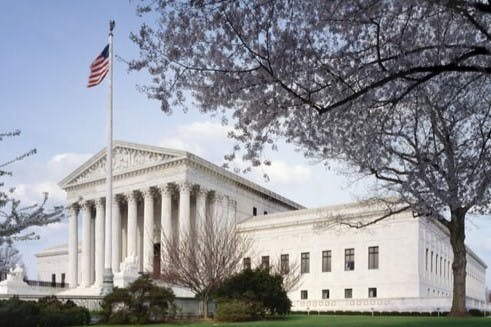
On October 31, the Supreme Court heard arguments for two cases about affirmative action policies at the University of North Carolina and Harvard University, advocating for the inclusion of race as a criterion in their admission processes.
Arguing for UNC is Ryan Park, the North Carolina solicitor general, and arguing for Harvard is Seth Waxman. For the opposing party, Patrick Strawbridge argued for the Students for Fair Admission. Also, David Hinojosa who represents a “group of students and alumni from historically underrepresented groups”, helped to defend UNC’s admissions policy in the school’s case. Even U.S. Solicitor General, Elizabeth Prelogar, is arguing for the Biden administration to defend both universities’ policies.
Through the phrasing of the questions and the criticism that the six conservative justices had toward the court’s precedent in allowing race as a determinant, the future of affirmative action appears to be uncertain. Justice Clarence Thomas told Mr. Park that “I don’t have a clue [what diversity means]” and asked Mr. Hinojosa, “What academic benefits stem from diversity?”
When the Leman community was asked in a poll about their thoughts on affirmative action, there was a landslide decision. 82.1% agreed that affirmative action programs in colleges should stay as colleges continue to strive for diversity and prevent discrimination in marginalized communities, as well as protect the 40-year precedent that the Court set. There is also 17.9% who believe that affirmative action programs should be unconstitutional in order to protect all people equally and that colleges should only consider academic factors like grades, test scores, and extracurriculars rather than demographic data like race and gender.
Support for affirmative action has been echoed by the Leman admission office. Mr. Vasquez, a college counselor had this to say when asked about his thoughts on the issue:
“What I believe is that what can make a country's economy so successful is the experiences and backgrounds of a racially and ethnically diverse workforce. This can only be accomplished however, if college admissions is truly aware of the stake they have in admitting a diverse group of students.”
Supreme Court precedent cases have also been referenced throughout the arguments. One way is in questioning the timeline for how much longer affirmative action would be a necessary consideration for college admissions. Justice Amy Coney Barrett asked, “When does it end? When will you know?” She cited Bakke, one of the Supreme Court precedent cases that kept affirmative action alive, and how it has been nearly 50 years with still no clear sight of having achieved diversity.
Mr. Strawbridge has also used precedents for his case. He stated to the judges that “racial classifications are wrong”, mentioning Brown v. Board of Education (1954) to “finally and firmly” remove racial classifications with opportunities in education.
He then urged the justices to overrule Regents of the University of California v. Bakke (1978) and Grutter v. Bollinger (2003), two cases that upheld considering race in higher education. The defense for UNC and Harvard’s policies has pushed back on this, as have the three liberal justices. Park argued that such precedents cannot be stripped yet because there are no viable race-neutral alternatives, as have been seen across a variety of universities, and results have varied from campus to campus for those that do currently have them implemented.
There is also the point that removing race from the admissions equation would negatively affect candidates who have historically not had access to opportunities that their peers have. Up until 1950, UNC barred African Americans from even applying. Conservative justice Neil Gorsuch has even noted that other factors in the application process like family history of alumni, whether the applicant’s family had donated money to the university, or if the applicant is an athlete are all considerations that “tend to favor the children of wealthy white parents.”
The liberal Justice Ketanji Brown Jackson also stated that race is merely one factor in the application process and Justice Elena Kagan stressed the negative impact of a student body that is not diverse on the lack of diversity in other institutions like businesses and law firms.
Waxman and Prelogar urged the justices not to overturn Grutter and Bakke and offered alternative approaches to what they considered to be a drastic move. Waxman said that if the Court believes that the lower courts were “not sufficiently rigorous in reviewing the Harvard policy”, then the case should be sent back to them for another review.
Prelogar also appealed to the Court’s concern about the pace of progress toward diversity without the inclusion of race in the process and offered action toward a test that universities have to abide by to continue considering race. She went on to say, “Universities should be held to a high standard, and a heavy burden to explore those alternatives, to put into practice the race-neutral alternatives that currently exist, and to try to get to the point that the Grutter court imagined and that we will eventually reach as a nation where it is no longer necessary to take race into account.”
The Supreme Court’s decision on the two cases is expected to be announced next year.